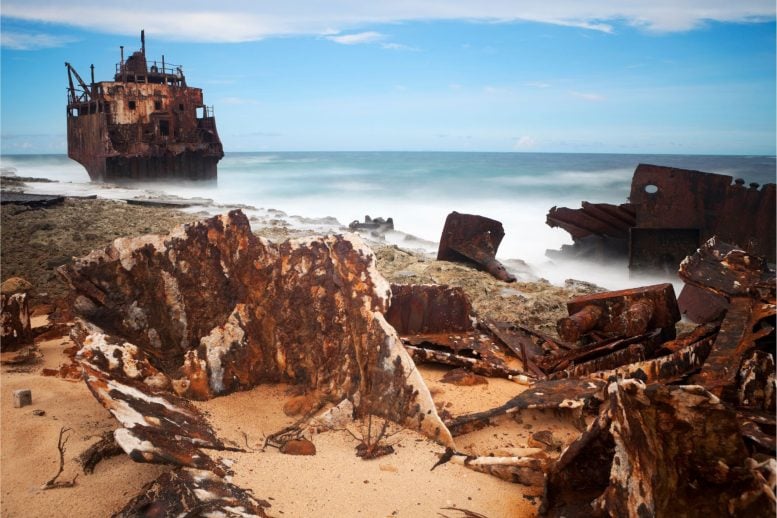Scientists Uncover Ancient Footprints Revealing Early Human Activity on a Small Caribbean Island 850 Years Earlier Than Previously Believed

A recent study carried out by researchers from Simon Fraser University and the NAAM Foundation provides evidence that human settlement on the island of Curaçao occurred up to 850 years earlier than previously thought. This discovery gives new perspective on the history of the Caribbean prior to the appearance of Columbus and highlights the crucial role of archaeological fieldwork and community involvement. The study is epitomized by the image of a rusty shipwreck on the island.
Latest research indicates human habitation in Curaçao happened between 5735 and 5600 calibrated years before present (cal BP). This suggests an occupation starting 850 years earlier than previously assumed.
The extensive research done by Simon Fraser University along with the National Archaeological Anthropological Memory Management (NAAM Foundation) in Curaçao have set back the date of the island's initial known human habitation by several hundred years, providing fresh insights into Caribbean history pre Columbus.
Since 2018, a team of international collaborators have been partaking in the Curaçao Cultural Landscape Project to study the prolonged biodiversity changes on the island and their connection to human activities.
The team's findings published in the Journal of Coastal and Island Archaeology show that humans began to occupy Curaçao, a southern Caribbean island, from as far back as 5735 - 5600 cal BP, which is 850 years earlier than first thought.
This revised chronology was established by using accelerated mass spectrometry to radiocarbon date charcoal found at the Saliña Sint Marie site, now recognized as the oldest known archaeological site on the island dating from the Archaic period.
Co-leader of the study and associate professor in SFU’s Department of Archaeology, Christina Giovas, discusses how the Caribbean settlement and its peoples' origins continue to be a contentious topic. She suggests that these new findings push the discussion of initial exploration back to a time when other islands to the north of Curaçao were being settled, linking the movement of people from mainland continents to these northern islands with the settlement of Curaçao.
Further research is needed to test this theory, notes Giovas while adding that the human exploration of the islands off the western Venezuelan coast began earlier than formerly known. This data provides a benchmark for studying human-environment interactions in the region.
According to co-leader of the study and NAAM Deputy Director, Claudia Kraan, the implication of the findings reveal to the locals that additional research could further uncover the lives of the island's former inhabitants. She expresses, "Archaeological information is dynamic, continually evolving with ongoing exploration and analysis."
During their first field season in 2022, the team along with a group of SFU archaeology undergraduate students traveled to Curaçao to undertake an international five-week field school. Students assisted in mapping, surveying, and excavation of project sites across the island, presenting their results to the local community. Local volunteers and the NAAM Foundation, an NGO that administers the island’s archaeological heritage in collaboration with the government and stakeholders, closely assisted them.
Giovas asserts that hands-on learning is invaluable for understanding archaeology. She strives to equip students with expertise in environmental archaeology, techniques and methods for examining past human interactions with the environment and using this knowledge for contemporary conservation and environmental consciousness.
The project also seeks to facilitate the development of local competence in archaeology, promote knowledge mobilization and bring awareness to the long-standing history of the region.
Giovas notes that involving students in these projects leads to generational shifts in the field’s culture. The team is scheduled to return to Curaçao in 2025 with another group of SFU international field school students to further investigate human impact on the island over time and the implications for future conservation efforts.
The report "Radiocarbon dates from Curaçao's oldest Archaic site extend earliest island settlement to ca. 5700 cal BP” by Claudia T. Kraan, Michiel Kappers, Kelsey M. Lowe, S. Yoshi Maezumi, and Christina M. Giovas, was published on 12th March 2024 in The Journal of Island and Coastal Archaeology.
Along with SFU and the NAAM Foundation, the team includes partners from Max Planck Institute of Geoanthropology, University of Queensland, and InTerris Registries.




